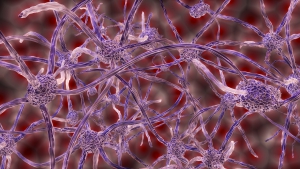 We’re all familiar with the idea of acupuncture, (the process of sticking needles into specific points on the horse), but, does it work and if so, how?
We’re all familiar with the idea of acupuncture, (the process of sticking needles into specific points on the horse), but, does it work and if so, how?
Why Does Acupuncture Work?
The practice of acupuncture began around 100 BC in China. Practitioners recognized that by stimulating specific areas on the body they could consistently elicit therapeutic responses. Today, as scientists and medical professionals, our knowledge of neuroanatomy helps us to understand why our patients respond favorably to acupuncture at these specific points. Many acupuncture points coincide with nerve bundles, myofascial planes, neurovascular bundles, and lymphatic vessels, all of which, when stimulated, can have both local and systemic effects on the body.
How Does Acupuncture Work?
Acupuncture works in several ways within the body:
- Local: the actual insertion process of the needle stimulates receptors that activate small, peripheral nerves within that particular region. Activation of these nerves has both a local effect on pain and sensation in the area as well as initiates a larger feedback process to the spinal cord. In addition, needle insertion increases blood flow to that area, both to the superficial as well as deep tissues. Increased blood flood is paramount to stimulate healing processes.
- Myofascial trigger points: these are regions of tight, spastic, contracted muscle, and are often the source of significant pain. Insertion of a needle into or around trigger points has been shown to help alleviate some of the contraction and pain thru activation of Golgi tendon organs and muscle spindle cells as well as increased blood flow.
- Segment specific pain relief: by stimulating certain nerves within a region we are indirectly stimulating the corresponding segment of the spinal cord to produce analgesic (pain relieving) effects. This is one of the main methods of analgesia induced via acupuncture.
- Peripheral effects: stimulation of the spinal cord eventually activates certain areas of the brain which can have various effects ranging from additional pain relief, regulation of internal organs, glandular secretions and even calming effects.
Scientific Research
From a scientific standpoint, there are a multitude of peer reviewed, medical publications demonstrating the unbiased benefits of acupuncture. From paralysis in Dachshunds to back pain in horses and carpal tunnel syndrome in humans, the improvements noted after acupuncture therapies are wide spread and well received. Even if your horse doesn’t suffer from significant pain or lameness issues, there can certainly be a place for acupuncture in his overall wellness plan.




